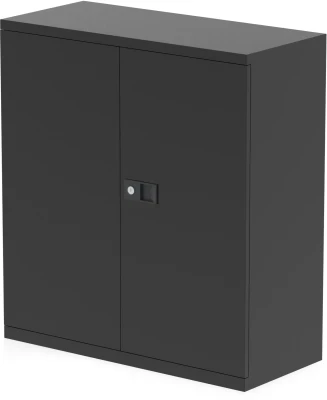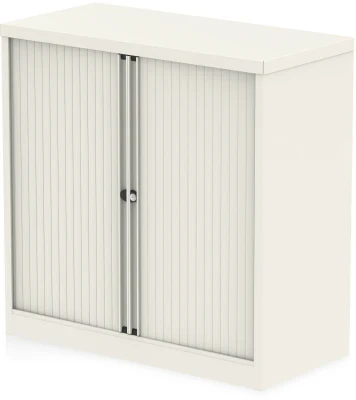The Office of 2030: What will the future office look like?
January 17, 2020 Patrick
The flicks of Back to the Future Part 2 and Meet the Jetsons imagined how everyday life would look in the future. They predicted what trends and technologies we could expect to see, with varying levels of success. And although the year 2015 has passed and we haven’t yet seen the emergence of the double-tie or dust-repellent paper, movie makers did correctly predict the popular use of video calls.
As we step into the next decade, what innovative designs and transformative cultures will we see come to the forefront by 2030? What will the future office look like?

Home Offices
Work is now wherever has the best Wi-Fi signal. More workers will be working from home as online applications continue to develop. To meet demand, a home office design revolution will take place. Versatile furniture such as comfortable 24-hour seating and flexible monitor arms will allow the home to cater to a full-time workload. Conservative storage solutions will see an increase, including personal filing cabinets and underdesk shelving.
Alternatively, remote workers will opt for more informal workspaces. With computers getting smaller and more nomads working full-time from their laptop, tablet or phone - formal work desks will be replaced. The future workspace will reflect and adapt, companies investing more in relaxed breakout spaces. As future tasks are completed from the seats of a bus or train, public services should also see a technological overhaul (although they are already running a bit behind the pace).
Agile Workstations
Recent research into ergonomics has demonstrated the negative effects of a sedentary lifestyle. A more health conscious future workforce will see an influx of height adjustable seating and desking. Exclusive products of the last decade will become commonplace as a rise in consumer demand benefits mass production. Modern ergonomic chairs and desks such as electronic height adjustable workstations will become increasingly affordable.
The adjustable office desk is great for saving space and useful for hot desking where stations cater to multiple users. A tailored workstation in an open plan office is ideal for both cooperation and productivity. As future workplaces become more adaptable, agile and intelligent, their aesthetic and style also evolves. Offices will become more attractive, more green and more beneficial to the health of the everyday worker.
Image from MeetinVR
Virtual Meetings
In many modern offices Skype group calls are part and parcel of the regular working day. The free service has reinvented the way we communicate with long distance colleagues. The practicality and cost saving quality of online meetings has convinced office workers, but that technology has its limitations.
Virtual Reality is the newest and most immersive way to collaborate long distance. It is being trialed by companies as a way to empower workers and save money on travel expenses. Interacting in virtual space extends the possibilities of online meetings, enabling the completion of activities which were previously thought of as impossible to be done remotely.
By 2030, Virtual Reality could play a big part in teleconferences. Employees will communicate through multiple bodies, forming a digital community. Add in 5G and the future possibilities of virtual office spaces are endless.

Wireless Workspaces
Cables of all shapes and sizes will soon become a thing of the past. Wireless charging ports and wireless connectivity is already commonplace; a Bluetooth keyboard and mouse can be bought on the high street. The next step for modern offices is making workstations cable-free; solutions include wireless thin clients, intelligent desk accessories, hidden cable management and laptop-friendly offices. Office service providers, such as Corbel, will continue to promote the latest IT solutions to clients. And as more startups are created, they will implement the fastest, most effective workplace arrangement to suit their business’s needs.
Going wireless in the future requires new technology, but the benefits will be generous. A fully mobile workplace allows for mass collaboration, company cross-pollination and a flexible use of space. An all-wireless user experience has been trialled and shown to reduce equipment costs, favouring the prediction that this setup will be mainstream by 2030.

Progressive Office Culture
As technology enables employees to work further apart, there will be a cultural reaction. Office workers will actively attempt to form connections, more effort injected into creating a societal atmosphere. Liberal attitudes to work are expected to take root as well as a more communal feel in the office by 2030. Flexi-time and personalised 24-hour schedules will see an increase. The office culture of the future will mostly be healthier and happier.
However, on the other side of the same coin, some colleagues may find themselves isolated as the need for face-to-face cooperation becomes obsolete. Mental health will be more closely addressed; involving company counselling, monitoring and a trend of psychological absenteeism. The average age of the workforce will continue to rise and workers will be able to multi-task more efficiently with technology performing most of the heavy-lifting.
Many of these innovative technologies are available to buy and use today. Products such as height adjustable desks and wireless workstations are quickly gaining popularity. Move fast on these latest innovations while your competitors are left looking back to the future, wondering where they missed out.
*** *** ***










